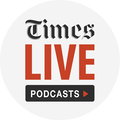
Fed minutes signal lower optimism on ‘high levels of uncertainty and risks’
Loading player...
Washington — The Federal Reserve minutes signalled a tempered optimism about growth in the second half of 2020 and US central bankers appeared to back off from an earlier readiness to clarify their guidance on the future path of interest rates when they met in July.
“With regard to the outlook for monetary policy beyond this meeting, a number of participants noted that providing greater clarity regarding the likely path of the target range for the federal funds rate would be appropriate at some point,” according to minutes published on Wednesday of the Federal Open Market Committee’s July 28-29 meeting, conducted via video conference.
That’s a subtle change from the previous set of minutes indicating policymakers were keen to sharpen their forward guidance “at upcoming meetings”.
Since the last meeting a number of FOMC members have indicated there is less need to offer new guidance so long as the coronavirus is significantly holding the economy back.
Stocks erased gains and the dollar rose after the release of the minutes.
Federal Reserve officials left interest rates unchanged near zero at the gathering and continued to buy Treasury and mortgage-backed bonds at a pace of about $120bn a month: actions that were aimed at nursing the economy through the severe recession triggered by the coronavirus pandemic.
At a press conference following the meeting, Fed chair Jerome Powell said the path forward for the economy was “extraordinarily uncertain” and would depend on containing the virus. Results on that front have been mixed, with infections rising in several US states, potentially weakening the recovery.
Even as they ratcheted down the urgency of altering their guidance in the near term, policymakers continued to discuss the conditions that would merit an eventual rate increase. These included the possibility of pinning changes to the federal funds rate to an outcome on inflation or employment, as well as sharpening the language around asset purchases in terms of “fostering accommodative financial conditions and supporting economic recovery.”
On the economy, the committee noted the rebound in consumer spending at their last meeting but repeated their view that the path of the recovery would depend on containment of the virus.
“Members agreed that the ongoing public health crisis would weigh heavily on economic activity, employment, and inflation in the near term and was posing considerable risks to the economic outlook over the medium term,” the minutes said.
“Participants saw less improvement ...
“With regard to the outlook for monetary policy beyond this meeting, a number of participants noted that providing greater clarity regarding the likely path of the target range for the federal funds rate would be appropriate at some point,” according to minutes published on Wednesday of the Federal Open Market Committee’s July 28-29 meeting, conducted via video conference.
That’s a subtle change from the previous set of minutes indicating policymakers were keen to sharpen their forward guidance “at upcoming meetings”.
Since the last meeting a number of FOMC members have indicated there is less need to offer new guidance so long as the coronavirus is significantly holding the economy back.
Stocks erased gains and the dollar rose after the release of the minutes.
Federal Reserve officials left interest rates unchanged near zero at the gathering and continued to buy Treasury and mortgage-backed bonds at a pace of about $120bn a month: actions that were aimed at nursing the economy through the severe recession triggered by the coronavirus pandemic.
At a press conference following the meeting, Fed chair Jerome Powell said the path forward for the economy was “extraordinarily uncertain” and would depend on containing the virus. Results on that front have been mixed, with infections rising in several US states, potentially weakening the recovery.
Even as they ratcheted down the urgency of altering their guidance in the near term, policymakers continued to discuss the conditions that would merit an eventual rate increase. These included the possibility of pinning changes to the federal funds rate to an outcome on inflation or employment, as well as sharpening the language around asset purchases in terms of “fostering accommodative financial conditions and supporting economic recovery.”
On the economy, the committee noted the rebound in consumer spending at their last meeting but repeated their view that the path of the recovery would depend on containment of the virus.
“Members agreed that the ongoing public health crisis would weigh heavily on economic activity, employment, and inflation in the near term and was posing considerable risks to the economic outlook over the medium term,” the minutes said.
“Participants saw less improvement ...

